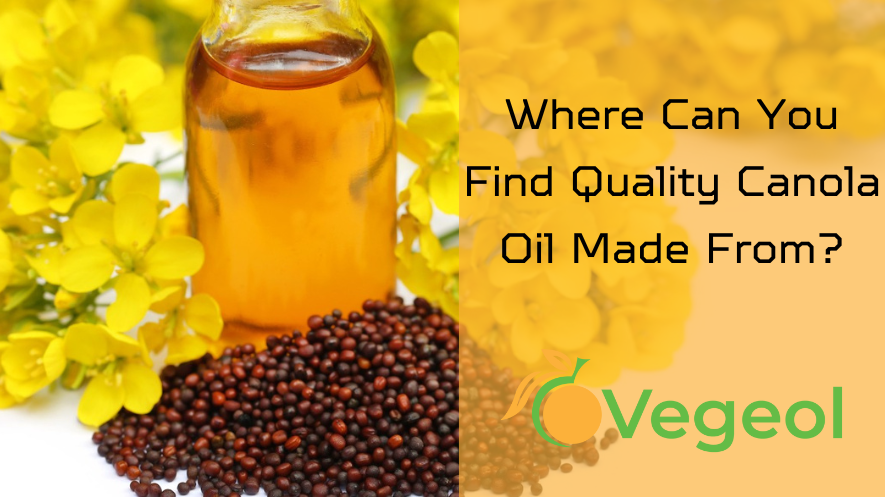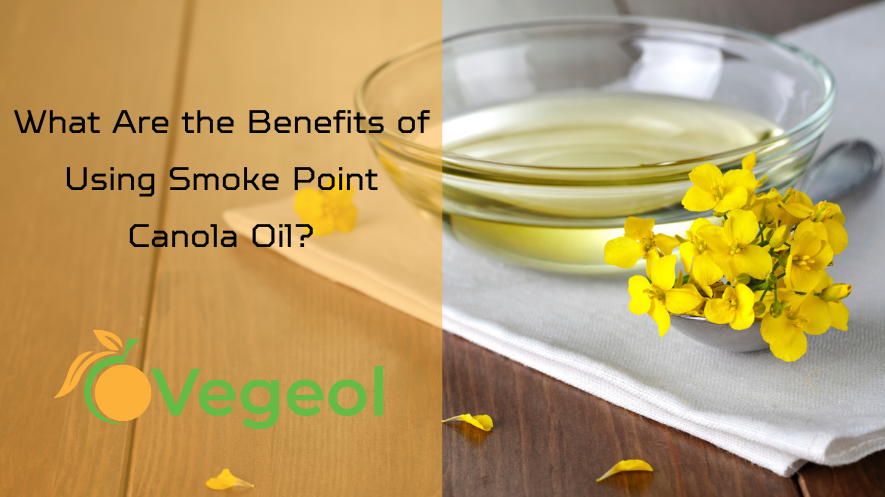Canola oil has a high smoke point and is a good choice for sauteing, frying and baking. It is also free of trans fats and dietary cholesterol.
It can be used interchangeably with vegetable oil, as it has similar qualities. For example, both oils can be used to roast vegetables or make a stir-fry.
1. Use it for Baking
When baking, canola oil can be used in place of butter or shortening. Its neutral flavor allows baked goods to bake up light, fluffy and moist. Its high heat tolerance makes it ideal for sauteing, stir-frying and roasting. Its ability to withstand high heat also helps food retain nutrients and prevents them from over-cooking.
Canola oil is ideal for marinades because its mild flavor allows other ingredients in a marinade to come through. A typical marinade combines oils, acids (such as vinegar or wine), herbs and spices, and a sweetener. The acid and herbs tenderize meat and vegetables, while the oil keeps everything moist.
Unless your recipe calls for a particular type of cooking oil, consider using canola for most recipes. Its versatility makes it an easy choice. When choosing a canola oil, look for one with a high smoke point and low trans fat level. You can find canola oil in the cooking oil section of many grocery stores and is also available at health food stores. If you prefer to avoid genetically modified organisms (GMOs), look for a non-GMO canola oil.
2. Substitute it for Butter
Canola oil can be used in the same manner as butter, but it is less than half the price. Plus, it is naturally low in saturated fat and trans fat, which reduces heart disease risk (45).
The neutral taste of canola oil allows the flavor of other foods to shine through. It is also a stable cooking oil with a high smoke point that makes it good for sauteing, frying and baking. Its mildness also makes it a popular choice for making salad dressings and sauces.
Registered dietician Constance Weissmuller, MS, RDN, points out that “canola oil gets a bad rap because it is extracted from rape seeds, which are not as palatable as say, an avocado, a coconut or an olive.” However, she says, “nutritionally, canola oil is very similar to olive oil.”
Another advantage is that canola oil is one of the best plant-based sources of omega-3 fatty acids in the form of alpha-linolenic acid, which helps reduce blood cholesterol levels. A small amount of canola oil also provides a good source of phytosterols, which block absorption of dietary cholesterol.
3. Drizzle it
When it comes to high-heat cooking, canola oil is a kitchen staple. It has a high smoke point, so it is perfect for roasting vegetables, sauteing and deep frying. It also has a neutral flavor that allows other ingredients’ flavors to shine through.
However, it is important to note that canola oil does not have the antioxidant properties of olive and avocado oils, which makes it more prone to going rancid quickly. To keep canola oil fresh, store it in a cool, dark place. It is also a good idea to purchase canola oil in dark bottles, as this will further reduce light exposure.
Canola oil is made from the seeds of the canola plant, which is part of the Brassicaceae family (broccoli, cauliflower, cabbage). The canola plant was developed by crossbreeding four different varieties of rape seed. This allowed for the creation of a seed with less erucic acid and glucosinolate, which are compounds that make oils go rancid faster. The seeds are then pressed to produce the oil. Most vegetable oils, including canola, undergo extensive processing to remove impurities and make them heat stable.
4. Drizzle it on Vegetables
Canola oil, derived from the rape plant (Canabis sativa), has a mild flavor and high smoke point that make it well-suited for sauteing or stir frying. Its also a great option for grilling.
Food Network chef and registered dietitian Tori Ritchie used it in her delicious recipe for Pork Loin Fillet with Spicy Pineapple Salsa for a heart-healthy Cinco de Mayo dinner. Its a great choice for grilling because it helps foods retain their texture and crispiness.
Its mild flavor means it wont alter the taste of your food and can be easily combined with other ingredients to create different flavors. It works well in salad dressings, vinaigrettes and marinades.
Canola oil is the most common cooking oil found in grocery stores. The canola industry has worked hard to educate consumers about this versatile, healthy oil and its many uses. While canola is a highly-studied ingredient, some studies show that heating cooking oils can change their composition and potentially have negative health impacts. For more information, click here to see CanolaInfo’s directory of cooking oil research.
5. Drizzle it on Bread
Adding oil to bread can help reduce the need for butter, which has higher levels of saturated fat. Try drizzling olive, canola or sunflower oil instead of butter.
Vegetable and canola oils are a great choice for baking because they have a neutral flavor and can withstand high heat. They also have a high smoke point, meaning they will not burn at a high temperature. Other cooking oils with a lighter flavor that can withstand high heat include peanut, sunflower, and avocado oil.
Save the pricey, cold pressed, extra-virgin olive oil for finishing dishes like drizzling over pasta, roasted vegetables or risotto. The grocery store has a variety of oils available, so choose the one that works best for you and your family’s tastes and cooking preferences.
6. Drizzle it on Pasta
The cooking oil aisle at grocery stores is home to a dizzying array of choices. Canola oil, which is made from the seeds of the rape plant, is among the most popular due to its neutral flavor and high smoke point.
It also provides a heart-healthy dose of monounsaturated fat, which has been shown to reduce cholesterol levels. And it’s low in saturated fat and trans-fat, which are associated with an increased risk of cardiovascular disease.
But canola gets a bad rap for being highly processed, and indeed it does undergo processing—in this case, using a chemical solvent called hexane to extract the oil from the seed. This is one of the reasons some influencers say you should avoid it.
Nevertheless, it’s still safe to use in your kitchen, especially if you store it properly, away from heat, light and air exposure. It’s also a great choice for salad dressings, vinaigrettes and marinades.
7. Drizzle it on Pizza
Because it has a mild flavor, canola oil is used in many recipes that call for butter or other saturated fats. It also adds moisture and tenderness to baked goods. Its high smoke point makes it ideal for frying, sauteing, and roasting foods. It can also be used in salad dressings, vinaigrettes, and marinades.
The canola plant is native to Canada and is one of the country’s most important crops. It grows in pods that resemble peas and contain tiny black seeds. These seeds are the source of canola oil. The seeds are pressed to extract the oil. The canola oil is then refined to improve its color and flavor.
It’s important to cook with a variety of oils. This increases nutrient diversity and limits exposure to potentially unhealthy components from the soil or processing. It’s recommended that you replace canola oil for high-heat cooking methods like frying with heat-tolerant oils such as extra virgin olive and avocado oils. Other healthy options include flaxseed, walnut, and hempseed oils for recipes that don’t involve high-heat cooking.
8. Drizzle it on Chicken
The cooking oil section of the grocery store is filled with a dizzying array of options. Among them, canola is one of the most common and readily available. While canola oil does receive some criticism for its high amount of saturated fat, it’s actually less than half that of butter, making it a heart-healthier option.
Canola oil is a versatile cooking oil, with a high smoke point (400 degrees Fahrenheit), making it ideal for roasting or sauteing. It also has a neutral flavor and is able to stand up to high heats without burning or overcooking foods.
Canola is an all-purpose cooking oil, but it can also be used to make infused oils. Infused oils can be used for dressings, marinades, and more, and are a great way to add a new twist to your favorite recipes. Canola oil is also a good source of vitamin E, which is thought to protect against oxidative damage. This is particularly important since a recent study suggests that oxidative stress is an underlying cause of cardiovascular disease.


